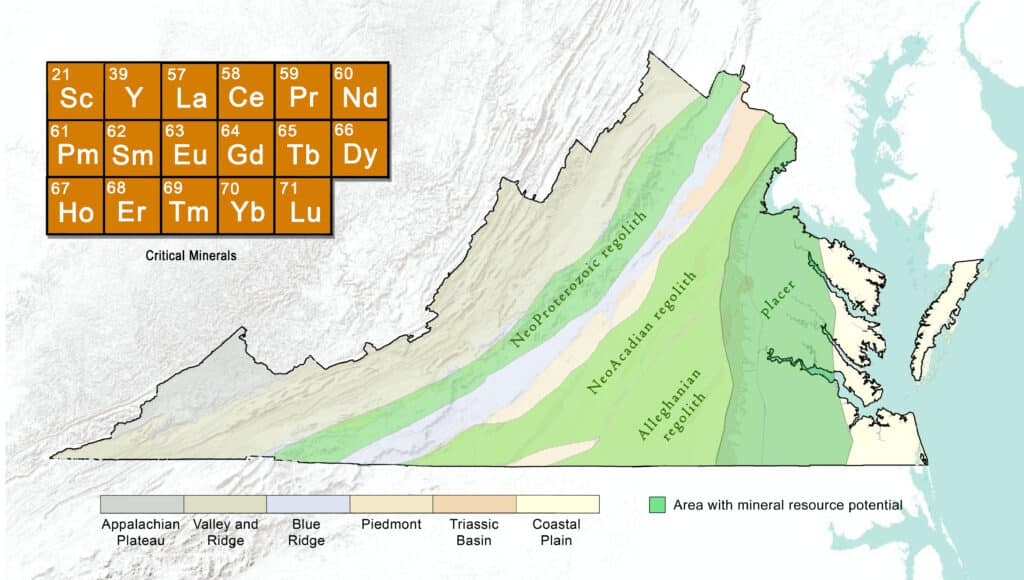Rare earth elements (REE)—a group of 17 critical metals including lanthanides, scandium, and yttrium—are essential to modern defense, energy, and communications technologies. Despite their name, most REEs are relatively abundant in Earth’s crust, but rarely occur in economically viable concentrations. These elements are divided into light (LREE) and heavy (HREE) categories based on ionic size, and they are substituted into hundreds of rock-forming minerals. Key REE-bearing minerals include bastnaesite, monazite, and xenotime, and they are vital for magnets, batteries, lasers, and medical imaging equipment.
Virginia (opens in a new tab) hosts diverse REE-bearing deposits across its geologic provinces, including placer deposits in Dinwiddie and Greensville counties and hard rock sources in the Blue Ridge and Piedmont regions. From the 1990s through 2017, heavy mineral sands in southern Virginia produced over six million tons of concentrates, including REE-enriched minerals like monazite, according to Virginia Energy. Atlantic Strategic Minerals recently restarted mining in the area, signaling renewed interest. Past exploration in places like Chestnut Knob (Henry County) and Little Friar Mountain (Amherst County) has revealed REE minerals, though no current commercial REE production exists in the state.
Today, Virginia Energy is partnering with regional geological surveys to evaluate ion-adsorption clays—potentially promising sources of HREEs—through the Earth MRI initiative. As global demand grows and the U.S. seeks domestic alternatives to China’s near-total dominance in REE processing, Virginia’s geological assets could play a strategic role in reinforcing national supply chain security for critical technologies.


Leave a Reply